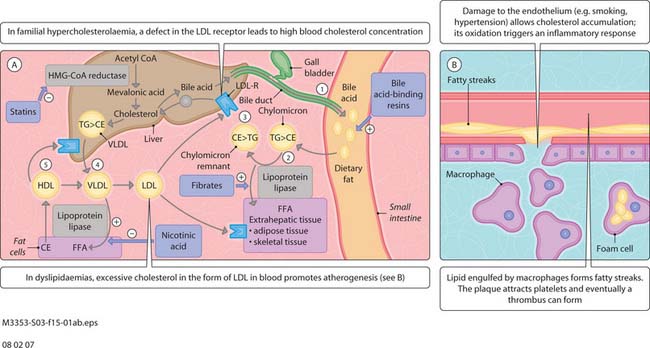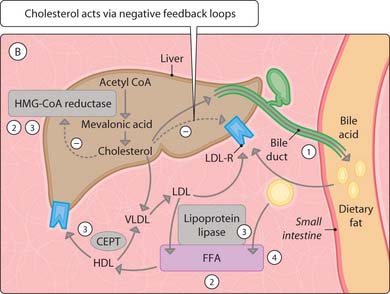15 Dyslipidaemia and lipid-lowering drugs
Physiology of lipoproteins
The metabolism of lipoproteins is complex (Fig. 3.15.1) and alterations in lipid metabolism can result in dyslipidaemias characterized by elevated levels of low density lipoprotein (LDL) and reduced levels of high density lipoprotein (HDL). Physiologically, HDL plays a ‘protective’ role against atherosclerotic disease in the sense that it lacks class B and E lipoproteins needed for LDL particle uptake by extrahepatic tissue and it has a role in ‘reverse cholesterol transport’ from extrahepatic tissue to the liver. Alterations in the levels of lipoproteins predispose individuals to the formation of atherosclerotic plaques, resulting in coronary artery disease. A variety of factors including a poor diet, lack of exercise and genetic predisposition (e.g. type IIa dyslipidaemia or familial hypercholesterolaemia caused by a defect in the LDL receptor) result in high plasma cholesterol levels and cardiovascular disease.
Treatment of high cholesterol and triacylglycerols
There are three major drug classes used to reduce circulating cholesterol and triacylglycerols (triglycerides): those that inhibit cholesterol absorption (bile acid-binding resins), those reducing its synthesis (statins) and those promoting its metabolism (fibrates) (Fig. 3.15.2).
< div class='tao-gold-member'>
Stay updated, free articles. Join our Telegram channel

Full access? Get Clinical Tree






